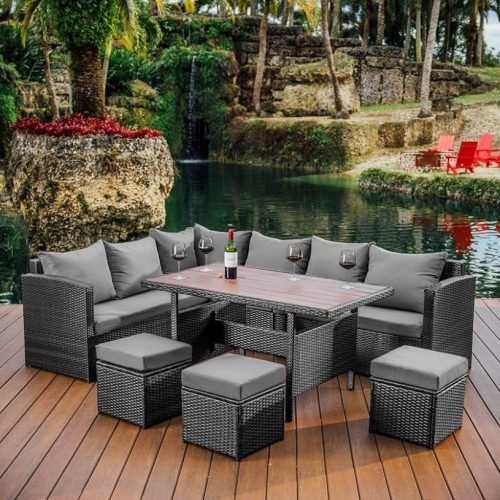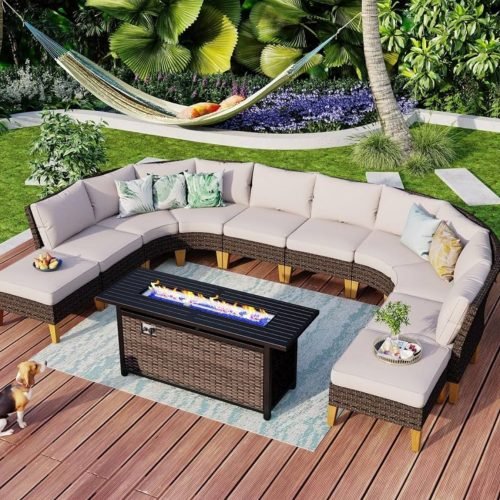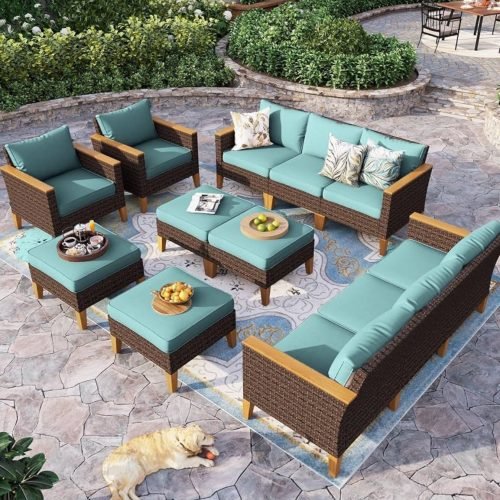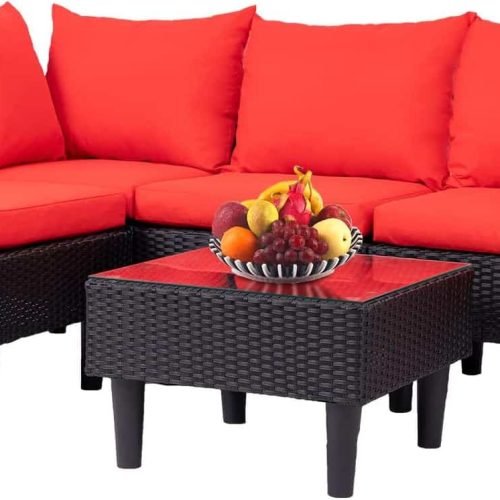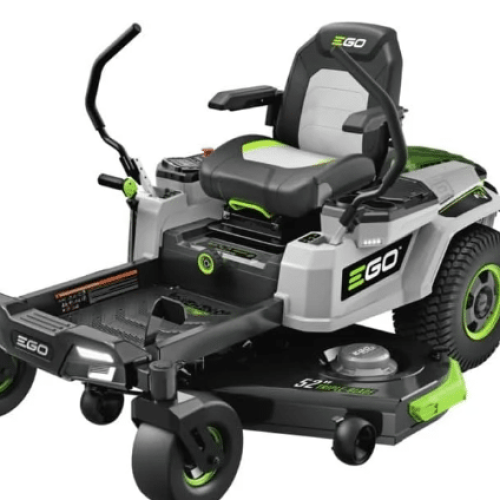Hey friends it’s JV Charles again . Did you know that cutting your lawn by just 1% can save over 6,800 gallons of water each year1? We’re moving away from the old ways of high-maintenance lawns and towards a new era of easy, effective landscaping. Not to mention veggie gardening! My hope is that this article will show you how to make a garden that looks great with little work. We’ll cover everything from choosing plants that don’t need much water to how to mulch right. Don’t worry. It’s a breeze with a few cool tips. Hope you enjoy!
Key Takeaways
- Big beds filled with a diverse matrix of plants require little grooming and pruning1
- Gravel paths instead of grassy walkways significantly reduce maintenance needs1
- Sustainable gardening practices like composting and closed-loop soil nutrient systems1
- Removing lawns can dramatically reduce weekly workload and resource use1
- Drought-tolerant plants and native species eliminate the need for irrigation12
Rethinking Traditional Garden Design
We need to change how we design gardens for a sustainable future. Traditional gardens often use a lot of resources and need a lot of care. It’s time for a new way that works with nature.
Eliminating Wasteful and High-Maintenance Practices
We should aim to stop using water-hungry lawns, which use up to 60% of water in some places3. Instead, we can use plants like flowering carpets, gravel gardens, and wild gardens. These need less water and upkeep3. Now we’re talking!
Embracing Sustainable and Environmentally Friendly Approaches
For a sustainable future, we must use garden designs that fit with nature. We should pick plants that like the local weather and soil. Using fewer synthetic fertilizers and pesticides, and composting and mulching, helps the soil4. This way, gardens can be beautiful with little help from us, helping nature and reducing our impact.
Changing traditional garden design means thinking differently. Just a little. By stopping wasteful ways and choosing sustainable ones, we can make gardens that are lovely, easy to care for, and good for the planet. This makes gardening more rewarding and fun. At least it has been for me.
Creating a Low-Maintenance Garden: Easy Plants and Design Tips
Creating a beautiful garden doesn’t have to be hard. Focus on easy-care plants and smart design for a space that’s easy to keep up5. Let’s look at some tips and plant suggestions for a garden that’s both lovely and low-maintenance.
Opt for Large Garden Beds
Big pots are simpler to care for than small ones, and they dry out less often5. Use large pots to group plants together for easier care. Add long-lived shrubs that won’t need replacing every year5. Evergreen plants like sedges and hellebores lose fewer leaves, cutting down on cleanup5. Groundcover plants are hardy and keep weeds away, making garden care easier5.
Choose Easy-Care Plants
For your garden, pick plants with the Award-winning AGM label as they do well in regular garden conditions5. Drought-tolerant and native plants need less water and care6. Self-clinging climbers like ivy and climbing hydrangea add height without needing constant pruning5.
Incorporate Sustainable Practices
Use sustainable gardening to cut down on upkeep. A permanent lawn edge means less trimming5. Mulching with bark chippings or gravel stops weeds and cuts down on watering56. Soil tests and drought-tolerant plants make maintenance easier6.
With these easy plants and design tips, we can make a garden that looks great and needs little work. A bit of planning and the right choices let us enjoy a beautiful outdoor area with less hassle.
Opt for Large Garden Beds
Creating a low-maintenance garden? Large garden beds are a great choice. Instead of small, separate beds, go for bigger, full beds. This makes your garden look better and needs less upkeep7.
Benefits of Overflowing, Tightly Knit Plant Beds
Big, densely planted beds offer many benefits for a low-maintenance garden. They need less care because plants help each other out. This means less weeding and watering, saving you time7.
These full beds also make your garden look stunning and natural8. Plus, they’re good for your plants. The plants help keep each other moist and healthy7.
For an even easier garden, use raised beds made of strong composite lumber9. These beds last a long time and make gardening easier. You won’t need to dig much, saving you time and effort9.
Big, full garden beds make your outdoor space beautiful and easy to care for. You’ll spend less time on upkeep, letting you enjoy your garden more.
Composting and Soil Enrichment
Healthy soil is key to a garden that’s easy to care for. By composting and adding organic stuff to the soil, we boost its texture, nutrients, and how well it holds water. This means we use fewer fertilizers and water less10. Making compost tea can also make soil healthier and cut down on upkeep.
Composting is a big win for gardeners who care about the planet. Hot composting can make compost in a few months when it’s warm10. Vermicomposting uses worms to make castings full of nitrogen10. Compost brings vital nutrients to the soil and makes it better at holding water and its structure10.
- Good things to compost are fruit and veg scraps, coffee grounds, eggshells, grass clippings, dry leaves, wood chips, shredded newspaper, straw, and sawdust from untreated wood10.
- For a compost pile, mix greens (like kitchen scraps) with browns (like dried plant stuff) in a three-to-one ratio for best results10.
- Keep the compost pile moist, like a damp sponge10.
- Turn the compost pile weekly to get air in it and speed up breaking down10.
- Chopping and shredding stuff before adding it helps compost faster10.
Compost has more perks. Once it’s fully cooked, it’s dry, brown, and crumbly. You can mix it into garden beds to make the soil richer10. Also, compost tea is made by steeping compost in water for days and used as a liquid fertilizer10.
By using composting and enriching the soil, we can have a garden that’s full of life and needs little care.
Minimizing or Eliminating Lawns
Traditional lawns are often the most demanding part of our gardens. It’s time to think differently and choose low-maintenance, sustainable options11.
Consider reducing or removing lawns for native plant gardens and gravel paths. Native plants need less water, fertilizers, and mowing than regular grasses12. Gravel paths also cut down on upkeep, since they don’t need the regular mowing and edging lawns do13.
Replacing Lawns with Native Plants and Gravel Paths
Using native plants and gravel paths in our gardens makes for a low-care landscape that looks good and is good for the planet11. Native plants are easy to care for once they’re established, fitting well with the local climate and soil12. Gravel paths offer a solid, long-lasting surface that doesn’t need mowing or constant upkeep13.
Switching from a traditional lawn to a garden with native plants and gravel paths saves us time and helps the environment11. Lawns can be mowed less often in some areas, and wilder spots can be left uncut from March to September13. These low-maintenance choices let us have a beautiful, eco-friendly landscape that shows we care about the planet12.
“Rethinking our traditional approach to landscaping and embracing low-maintenance solutions can have a profound impact on the health of our gardens and the environment.”
Choosing the Right Plants
Starting a low-maintenance garden means picking the right plants. Focus on drought-resistant and native plants that fit your local climate and soil14. These plants need less water and care than non-native ones.
Selecting Drought-Tolerant and Native Plants
Choosing drought-tolerant and native plants cuts down on garden work15. They’re made for your area, so they’re tough and strong. This way, you get a garden that’s easy to keep up, needing less time and effort.
For easy upkeep, pick perennials, shrubs, and trees that don’t need much care14. Grasses are especially easy to look after14. Planting them close together also stops weeds from growing, saving you more work14.
Keep your garden simple by using fewer plant types14. A smaller, well-chosen selection makes gardening easier and helps all your plants do well with less work.
Using drought-tolerant and native plants makes your garden beautiful and easy to maintain16. These plants are tough and strong, leading to a garden you can enjoy with little effort for many years.
Mulching for Moisture Retention and Weed Suppression
Adding a thick layer of mulch to your garden beds changes the game for low-maintenance gardens. Mulch, like bark, compost, or wood chips, keeps soil moist and stops weeds from growing. This means you water and weed less often17. It also protects plants from extreme temperatures, making them healthier17.
Experts suggest using 2-3 inches of mulch around plants. Make sure it covers the soil but doesn’t touch the stems18. This amount is perfect for keeping moisture in and temperatures steady. It also lets roots breathe and get the oxygen they need18.
Mulching has many benefits. It stops weeds by blocking sunlight and preventing seeds from germinating18. It keeps soil moist, cutting down on watering, especially when it’s dry18. Over time, mulches like compost make the soil richer and better for roots18.
When picking mulch, think about your local weather and what you like. Organic mulches like pine needles and leaf mold keep moisture in and improve soil quality18. Inorganic mulches like stone or rubber last a long time and need little care18. The best mulch is applied thick in late spring or early summer for the best results18.
| Mulch Type | Key Benefits | Reapplication Frequency |
|---|---|---|
| Bark | Conserves moisture, reduces erosion, and is a good soil conditioner17. | Every 2-3 years17 |
| Grass Clippings | Provides a source of nitrogen as they decompose17. | Annually with each mowing |
| Leaf Mold | Excellent soil amendment created from partially decomposed leaves17. | Every 1-2 years |
| Newspaper | Can be used as a base underneath bark or decorative gravel17. | As needed |
Using mulch makes your garden thrive with less work. It saves water, stops weeds, and makes soil and plants healthier19. This simple step is a big win for your garden19.
“Mulch is the unsung hero of the garden – it quietly goes about its business, improving soil, retaining moisture, and keeping weeds at bay. A true low-maintenance essential.”
Conclusion
We can make our outdoor spaces thrive with little effort by following the tips in this article. Choosing the right plants and enriching the soil are key steps. These methods turn a hard-to-maintain garden into a lush, sustainable area that brings joy2021.
For a low-maintenance garden, rethink traditional designs and use eco-friendly methods. Pick plants that fit our climate and use large, dense garden beds. Composting and choosing native plants over lawns make our gardens beautiful and tough21.
This article gives us the lowdown on easy gardening tips and important strategies. With these tips, we can have a garden that looks great and fits our lifestyle. We’ll have more time to enjoy our outdoor space, making it a peaceful retreat2021.
FAQ
What are the key strategies for creating a low-maintenance garden?
To make a low-maintenance garden, pick plants that don’t need much water and are native to your area. Use compost to make the soil rich. Also, think about reducing or getting rid of lawns and mulching well.
Why is it important to rethink traditional garden design?
Old garden designs often focused on controlling nature, not working with it. This led to gardens that were hard to keep up. Now, we’re moving to sustainable designs that need less work and care.
How can larger garden beds benefit a low-maintenance landscape?
Big garden beds filled with many plants need less trimming and care. This makes your garden look better and requires less work.
Why is healthy soil important for a low-maintenance garden?
Healthy soil is key for a garden that takes little upkeep. By adding compost and organic stuff, you make the soil better. This means plants grow stronger, need less food and water, and are more resistant to problems.
What are the benefits of minimizing or eliminating lawns?
Lawns are hard to keep up. Switching them with plants and gravel paths cuts down on the work. Your garden will look great and need less care.
How can the right plant selection contribute to a low-maintenance garden?
Choosing plants that are tough and native helps your garden thrive with little effort. They’re made for your local weather and soil, so they need less water and care.
What are the benefits of using mulch in a low-maintenance garden?
Mulch keeps the soil moist, stops weeds, and keeps temperatures steady. This means you’ll water and weed less, making your garden easier to keep up.
Source Links
- https://www.finegardening.com/article/creating-a-low-maintenance-garden – Creating a Low-Maintenance Garden – Fine Gardening
- https://www.bhg.com/low-maintenance-small-garden-design-ideas-7373870 – 11 Low-Maintenance Small Garden Design Ideas for Your Landscaping
- https://anirishgardener.wordpress.com/2017/03/29/planting-design-for-dry-gardens-olivier-filippi/ – Planting Design for Dry Gardens – Olivier Filippi
- https://www.monarchgard.com/books.html – Books Monarch Gardens
- https://www.rhs.org.uk/garden-inspiration/get-gardening/10-ways-to-a-low-maintenance-garden – 10 ways to have a great-looking, low maintenance garden
- https://www.gardendesign.com/landscape-design/low-maintenance.html – Transform Your Garden: Low-Maintenance Gardening Ideas – Garden Design
- https://ginghamgardens.com/low-maintenance-flower-garden/ – Creating and Caring For a Low Maintenance Flower Garden – Gingham Gardens
- https://www.finegardening.com/article/how-to-reduce-maintenance – How to Reduce Maintenance – Fine Gardening
- https://anoregoncottage.com/diy-raised-garden-bed/ – How to Build & Plant a Low Maintenance Raised Garden Bed – An Oregon Cottage
- https://www.bhg.com/gardening/yard/compost/how-to-compost/ – 4 Simple Steps for Making Compost to Feed Your Dream Garden
- https://thelandscapelibrary.com/how-to-create-a-low-maintenance-landscape/ – How to Create a Low Maintenance Landscape
- https://tataandhoward.com/10-tips-for-a-low-maintenance-eco-friendly-backyard/ – 10 Tips for a Low-Maintenance, Eco-Friendly Backyard – Tata & Howard
- https://www.gardenergary.com/post/how-to-create-a-low-maintenance-garden – How to create a low maintenance garden
- https://www.themiddlesizedgarden.co.uk/brilliant-low-maintenance-plants-for-beautiful-gardens/ – Brilliant low-maintenance plants for beautiful gardens
- https://wolfhillgardencenter.com/blogs/blog/low-maintenance-landscaping-choosing-the-right-plants-and-design-for-your-yard – Low-Maintenance Landscaping: Choosing the Right Plants and Design for
- https://yardzen.com/yzblog/low-maintenance-plants-for-your-landscaping-project – Guide to Low-Maintenance Plants and Planting Design | Yardzen
- https://gardenerspath.com/how-to/composting/mulching-low-maintenance-gardening/ – How to Use Mulch for Low Maintenance Gardening | Gardener’s Path
- https://ginghamgardens.com/using-mulch-in-your-flower-garden/ – Using Mulch in Your Flower Garden (Simple Tips & Tricks) – Gingham Gardens
- https://jeansgarden.wordpress.com/2010/05/07/weed-water-mulch-a-low-maintenance-perennial-garden-strategy/ – Weed, Water, Mulch: A Low-Maintenance Perennial Garden Strategy
- https://millburnlandscape.com/creating-a-low-maintenance-garden-landscape-design-tips-for-busy-homeowners/ – Creating a Low-Maintenance Garden: Landscape Design Tips for Busy Homeowners | Millburn Lawn & Landscape
- https://www.dreamzar.app/post/7-tips-for-creating-a-low-maintenance-garden-design – 7 Tips for Creating a Low-Maintenance Garden Design


